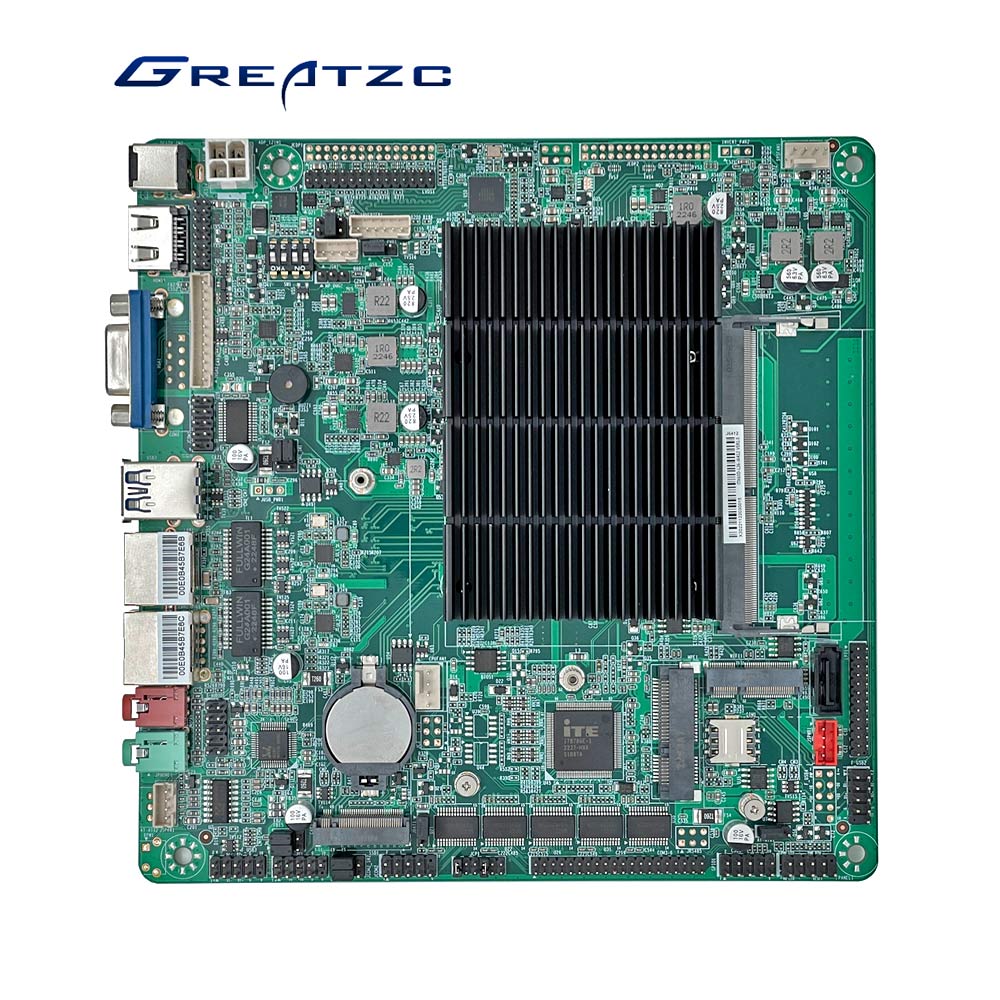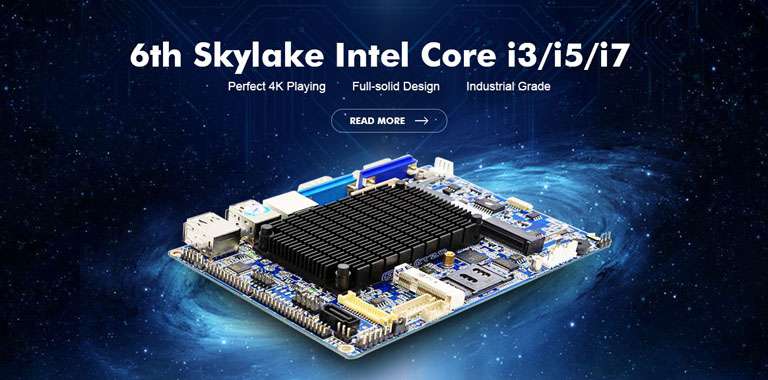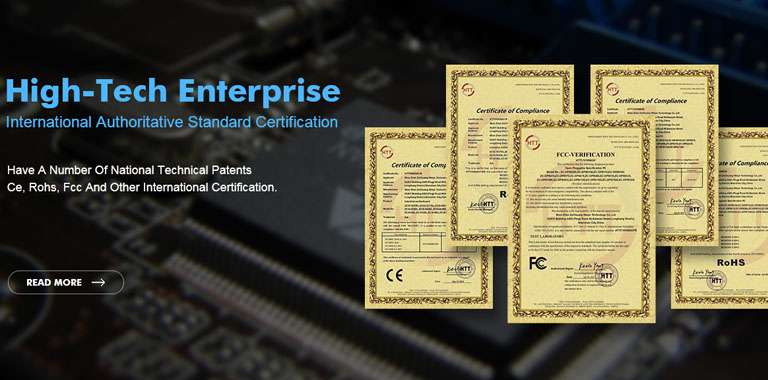The Critical Requirements of Motherboards in Industrial Automation Systems
2025-02-14
The Critical Requirements of Motherboards in Industrial Automation Systems
Industrial automation has become the backbone of modern manufacturing, powering smart factories, robotic assembly lines, and process control systems. At the heart of these systems lies a critical component often overlooked – the industrial motherboard. Unlike consumer-grade counterparts, motherboards designed for industrial automation must meet stringent technical specifications to ensure reliability, durability, and seamless integration within harsh operational environments. This article examines the key requirements shaping industrial motherboard design.
1. Robust Environmental Resilience
Industrial environments expose electronic components to extreme conditions rarely encountered in commercial settings. Motherboards must withstand temperature fluctuations ranging from -40°C to 85°C in unregulated facilities while maintaining stable operation. Specialized conformal coatings protect against corrosive chemicals, metallic dust, and humidity levels exceeding 90% RH. Vibration resistance up to 5Grms ensures functionality in environments with heavy machinery, requiring solder joint reinforcements and shock-absorbent mounting solutions.
The extended operational lifespan (typically 5-10 years) necessitates military-grade capacitors and PCB materials with low thermal expansion coefficients. Unlike consumer boards rated for 40,000 power cycles, industrial variants often exceed 100,000 on/off cycles through reinforced power circuitry design.
2. Real-Time Processing Capabilities
Modern automation systems demand deterministic performance for critical tasks like motion control and sensor data processing. Motherboards require:
Multi-core processors with dedicated real-time cores
Precision timing modules (≤1μs synchronization accuracy)
Low-latency PCIe architectures (<500ns)
Hardware-assisted interrupt handling
These features enable precise coordination of servo motors, vision systems, and PLC communications. Support for real-time operating systems (RTOS) and industrial Ethernet protocols (EtherCAT, PROFINET) is mandatory for μs-level task scheduling.

3. Expansion and Customization Flexibility
Modular design principles dominate industrial motherboard architecture. Key expansion capabilities include:
Multiple PCI/PCIe slots for motion control cards
Mini-PCIe/M.2 interfaces for wireless modules
Programmable FPGA support through HSMC connectors
DIN-rail compatible form factors (e.g., 3.5", 5.25")
Backward compatibility with legacy interfaces (RS-232/485, parallel ports) remains crucial while integrating modern USB 3.2 Gen 2 (20Gbps) and 2.5GbE ports. The ability to support both x86 and RISC-V architectures provides scalability across different performance tiers.
4. Power Integrity and Efficiency
Industrial power systems exhibit significant voltage fluctuations (up to ±20% from nominal 24VDC). Motherboards incorporate:
Wide-range DC input (9-36VDC)
Active PFC (Power Factor Correction) circuits
Redundant power inputs with failover mechanisms
Smart power sequencing controllers
Advanced power management features like ATX suspend modes and S0ix low-power states reduce energy consumption by 40% in idle conditions compared to conventional designs.
5. Long-Term Supply Chain Stability
Unlike consumer electronics with 12-18 month lifecycles, industrial systems require 10+ years of component availability. This demands:
Extended product lifecycle management
Component obsolescence mitigation plans
Pin-to-pin compatible upgrade paths
Industrial temperature-rated BOM (Bill of Materials)
Manufacturers often maintain 15-year production commitments with guaranteed firmware updates for security patches and protocol stack enhancements.
6. Cybersecurity Hardening
As IIoT adoption accelerates, motherboards integrate hardware-rooted security features:
TPM 2.0 modules for cryptographic operations
Secure boot with hardware-based attestation
Encrypted storage controllers (AES-256)
Physical tamper detection circuits
Trusted execution environments (TEE)
These measures protect against supply chain attacks and unauthorized firmware modifications while meeting IEC 62443 cybersecurity standards.
7. Predictive Maintenance Readiness
Smart manufacturing requires motherboards with built-in health monitoring:
On-board voltage/temperature sensors
Fan speed diagnostics with PWM control
SSD wear-leveling indicators
Error-correcting code (ECC) memory logging
SNMP traps for network anomaly detection
Such features enable predictive maintenance algorithms to anticipate failures 72+ hours in advance, reducing unplanned downtime by up to 45%.
8. Certification Compliance
Industrial motherboards must obtain rigorous certifications:
EMI/EMC: EN 55032 Class A, FCC Part 15
Safety: UL 60950-1, CE RED
Environmental: RoHS III, REACH SVHC
Industry-specific: EN 50155 (railways), DNV-GL (marine)
Compliance ensures electromagnetic compatibility in dense installations and safe operation in explosive atmospheres (ATEX Zone 2).
Future Evolution
Emerging trends are reshaping requirements:
Edge AI Integration: Dedicated NPU blocks for on-device machine learning
Time-Sensitive Networking: IEEE 802.1AS-rev timing for multi-vendor synchronization
5G RedCap Support: Reduced capability modems for private networks
Cyber-Physical Security: Quantum-resistant cryptography modules
Conclusion
The industrial motherboard serves as the central nervous system of automation infrastructure, balancing cutting-edge computing power with rugged reliability. As Industry 4.0 advances, these technical requirements will continue evolving, driven by AI integration, energy efficiency mandates, and increasingly complex cyber-physical systems. Manufacturers must maintain rigorous engineering standards while anticipating future technological shifts to power the next generation of smart factories.
PREV: The Rise of Compact Computing: Exploring Mini-ITX Motherboar...
NEXT: Fanless Embedded Mini-ITX Motherboards: Powering Silent, Rel...



